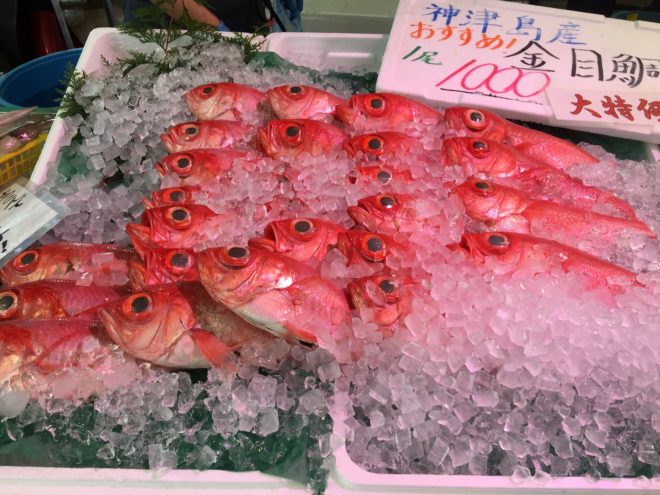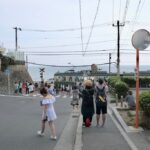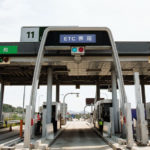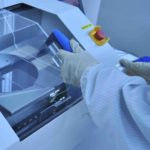Continuing his series investigating novel means to regional revitalization, Katayama Osamu profiles Tokyo Haneda Market, which is revolutionizing the fish distribution network in Japan.

By leveraging the chosoku-sengyo distribution system, a town’s small fish store could compete against a major supermarket. Pictured, freshly caught kinmedai (Splendid Alfonsino) from Kozushima, an island in the Tokyo Metropolis, on sale at a Yokohama retail fish market.
JAPAN JOURNAL PHOTO
At the end of October 2016, it was reported that Chimney Co., Ltd., the company operating the Japanese-style pub chain Hananomai, would enter into an agreement with CSN Chihou Sousei Network (now Tokyo Haneda Market), a fresh fish distribution venture. The deal would enable to secure fresh fish using CSN’s procurement network known as chosoku-sengyo, meaning fresh fish delivered via a super-fast system.
Sometimes I drink at Hananomai, so I wondered about the background to this collaboration. It turned out the agreement would enable Hananomai to serve fresh fish to customers on the very day it was caught at the earliest, while it used to take two or three days.
Following this tie-up, Chimney reported it would expand the chosoku-sengyo system, which had been pre-introduced in the metropolitan area, to rural areas as well.
Nomoto Ryohei, the founding president of CSN, which developed the chosoku-sengyo system, is striving to realize regional revitalization through the improvement of income and revitalization of business operators in the primary industry.
How can distribution reform contribute to regional revitalization?
“If incomes in the primary industry become stable and occupations there also become attractive, young people will return to their hometowns and more youngsters will take over the business. If fisheries and agriculture become a sustainable industry, regions that rely on such primary industries can gain more energy, which is true regional revitalization,” Nomoto says.
Let’s take a look at the chosoku-sengyo system.
In September 2015, Nomoto established Haneda Fresh Fish Center in a facility at the air cargo terminal at Haneda Airport Terminal 2, where the processing of fresh fish and the like is carried out.
Through this system, the fish caught in rural areas early in the morning can be transported to local airports by car, arranged by CSN. In tens of minutes after arriving at Haneda airport by airplane, the fish is processed at Haneda Fresh Fish Center, shipped and subsequently served to consumers at eating and drinking venues or sold at supermarkets in Tokyo in the evening.
It is also possible to ship fish from Haneda to rural areas. After loading at Haneda Fresh Fish Center, the fish is transported on domestic flights and distributed to rural areas, and again sold on the same day at supermarkets and other stores in local cities.
In April 2016, CSN started overseas operations to transport the fish to Singapore and Vietnam on international flights. People in China and Southeast Asia can now eat fresh fish from Japan within the day.
In addition, CSN operates an online system called the Tokyo Haneda Market (now the new company name of CNS). When a fish caught by a fisherman is registered on the list of the Tokyo Haneda Market, a buyer from CSN can express the intention to purchase it. CSN has contracts with about 700 fishermen from all over the country, from Hokkaido to Okinawa. It purchases fish directly from these fishermen and delivers it to the purchasers.
It is now possible to purchase and sell fresh high-value-added fish at a reasonable price through the disintermediation of distribution, which directly connects fishermen and consumers.
However, it is difficult for primary industry workers to create such a distribution network by themselves.
Nomoto is a distribution professional. He had worked as an executive officer of a listed company until 2014 when he founded CSN. But he decided to take a risk and start a new business from scratch instead of remaining at his secure position. He has a sense of crisis about the current state of the primary industry in Japan, as well as enthusiasm for regional revitalization.
Nomoto’s parents worked as a secondary wholesaler of food for professional use. He started helping his parents after graduating from high school, and then rented a factory to make deals with manufacturers. He was engaged in the trading business to purchase and sell processed agricultural and fishery products from China. The basis of Nomoto’s own work style has been created by running the scene himself, struggling, and gaining knowledge and experience.
After changing jobs several times, Nomoto worked on the distribution reform of an eatery chain, realizing Asadore, a system which enables customers to eat fresh fish caught in the morning on the same day.
“This business was a big hit and I found that there was a huge market where people in urban areas want to eat fresh fish caught that morning,” Nomoto says.
After he changed jobs again and served as a director of a major food manufacturer, he became independent in 2014 with the hope of connecting producers and consumers, which led to his current situation.
In depopulated areas where local production and consumption is not feasible, business operators in the primary industry cannot survive unless they find markets that purchase carefully grown vegetables and fresh fish at higher prices.
“Under the current circumstances where the population is concentrated in large cities, the fishery industry in rural areas is playing a key role in the huge markets. Yet, it is unreasonable that they do not make enough profit. In order to earn revenue equivalent to the value, we have to create a new model,” Nomoto stresses.
By leveraging the chosoku-sengyo system, a town’s small fish store could compete against a major supermarket.
However, even if the income of the business operators in the primary industry improves, it is unlikely that the number of successors will increase soon and fisheries and agriculture will regain their dynamism. A longstanding and stable mechanism is needed that can help the region become prosperous on a continuous basis.
Can CSN make it successful?
Their challenge has only just begun.
Note: This is a translation of an article written in Japanese in November, 2016.
KATAYAMA Osamu is an economics journalist and representative of K-Office. He has published extensively, including Sumato kakumei de seicho suru Nihon keizai (Growing the Japanese Economy with the Smart Revolution), and Naze Za Puremiamu Morutsu ha uretsuzukeru noka? (Why does The Premium Malt’s beer sell so well?). Recent publications include Samsun kuraishisu (The Samsung Crisis).








